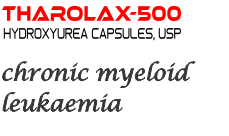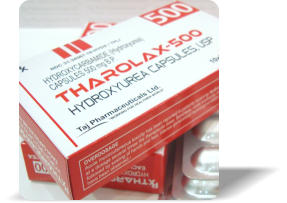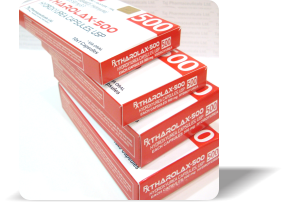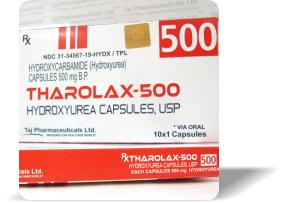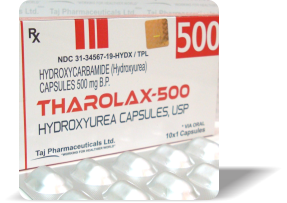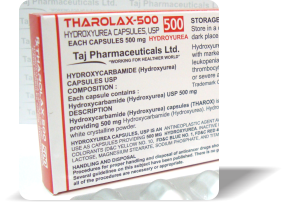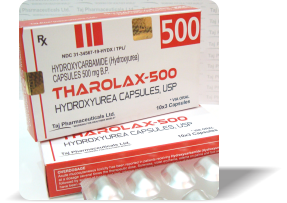THAROLAX® 500 (Hydroxyurea USP Capsules)
Tharolax 500 (Hydroxyurea USP Capsules)
Prescribing Information- Indications and Usage
- Description
- Clinical Pharmacology
- Contraindications
- Warnings And Precautions
- Adverse Reactions
- Dosage And Administration
- Drug Reactions
Tharolax 500 (Hydroxyurea USP Capsules)
ManufacturingManufacturing Control Setup Taj Group
Test Equipment and Facilities : The manufacturing facilities are based in Valsad (Gujarat) and Raigad (Raigarh, Maharashtra) and operated by Taj Pharmaceuticals Ltd.
In our quest to be the leading manufacturer in the pharmaceutical industry and a CRAMS player of global standing; we aspire to meet and excel the highest industry standards. To this end, on the manufacturing front, we have designed and engineered our production facilities to the most rigorous benchmarks.
Important Safety Information
Treatment of patients with THAROLAX may be complicated by severe, sometimes lifethreatening, adverse effects. THAROLAX should be administered under the supervision of a physician experienced in the use of this medication for the treatment of sickle cell anemia.
Hydroxyurea is mutagenic and clastogenic, and causes cellular transformation to a tumorigenic phenotype. Hydroxyurea is thus unequivocally genotoxic and a presumed transspecies carcinogen which implies a carcinogenic risk to humans. In patients receiving long-term hydroxyurea for myeloproliferative disorders, such as polycythemia vera and thrombocythemia, secondary leukaemia’s have been reported. It is unknown whether this leukemogenic effect is secondary to hydroxyurea or is associated with the patient's underlying disease. The physician and patient must very carefully consider the potential benefits of THAROLAX relative to the undefined risk of developing secondary malignancies. Tharolax is used to treat chronic myeloid leukaemia or cervical cancer.
Your medical team will discuss with you the options for treating your cancer. They will take into account factors such as the type of cancer, where it is, which stage it is at and whether you have had treatment before. The results of blood tests and other investigations will also be considered. How well you feel and how you are likely to cope with treatment is also important.
Your cancer treatment will usually consist of a treatment session with Tharolax followed by a break of a number of days before the next treatment session with Tharolax. This cycle may be repeated many times as part of your cancer treatment. Tharolax works by damaging cancer cells in the body. Tharolax also affects healthy cells and treatment with Tharolax may damage your immune system. Your medical team may arrange for you to have some blood tests to check how well your immune system is working.
Do not share your medicine with other people. It may not be suitable for them and may harm them.
The pharmacy label on your medicine tells you how much medicine you should take. It also tells you how often you should take your medicine. This is the dose that you and your prescriber have agreed you should take. You should not change the dose of your medicine unless you are told to do so by your prescriber. If you feel that the medicine is making you unwell or you do not think it is working, then talk to your prescriber.





